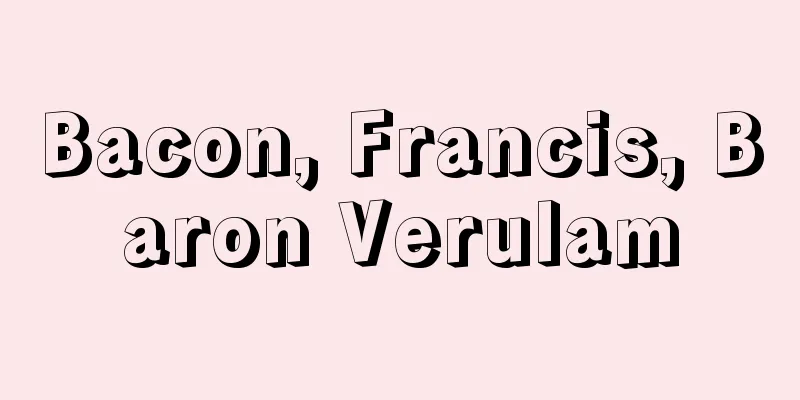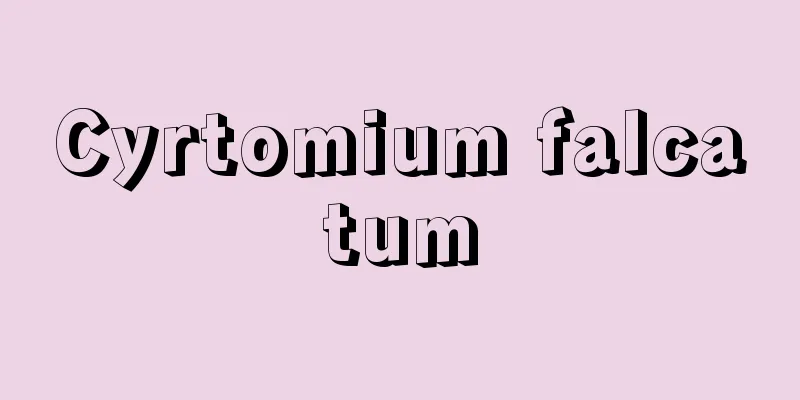Bacon, Francis, Baron Verulam

|
Born: January 22, 1561, London Died: April 9, 1626. Highgate. British philosopher. Founder of modern British empiricism. After studying at Cambridge University, he went to Paris, but returned to the United States after his father's death and became a member of parliament and other political activities. In 1621, he retired from public office due to corruption and devoted himself to writing. He wrote a new organon, Novum Organum (1620), which replaced Aristotle's Organon, and emphasized the empirical method and advocated inductive method over deductive method. In other words, he rejected the four idols of Aristotelian scholastic philosophy's syllogism, namely (1) the idol of the race, (2) the idol of the cave, (3) the idol of the market, and (4) the idol of the theater, and advocated academics based on objective observation and experimental methods. He wrote a utopian story, Nova Atlantis (27). His other publications include The Advancement of Learning (05). bacon |
|
[生]1561.1.22. ロンドン [没]1626.4.9. ハイゲート イギリスの哲学者。近代イギリス経験論の創始者。ケンブリッジ大学に学んだのち,パリに渡ったが,父の死後帰国し,国会議員などの政治活動に入った。 1621年汚職のため公職を退き,以後著述に専念した。彼はアリストテレスの『オルガノン』に代る新しいオルガノン『ノブム・オルガヌム (新機関) 』 Novum Organum (1620) を著わし,経験的方法を重視し,演繹法に対し帰納法を提唱した。すなわちアリストテレス的スコラ哲学の三段論法による4つのイドラ,すなわち (1) 種族のイドラ,(2) 洞窟のイドラ,(3) 市場のイドラ,(4) 劇場のイドラを排除し,客観的観察,実験的方法による学問を主張した。ユートピア物語として『新アトランティス』 Nova Atlantis (27) がある。ほかに『学問の進歩』 The Advancement of Learning (05) 。 ベーコン
|
>>: Pecopteris (English spelling)
Recommend
Plant - Shokubutsu (English spelling) plant English
Living organisms on Earth can be broadly divided ...
Kim Hyung-jun
...When the novelist Kim Hyung-jun (born in Suwon...
Ikan - Seikan
This is a Chinese architectural structure made by ...
Principal - Motokin
〘noun〙① Capital to start a business. The original....
Parallax -
The difference in direction when a celestial obje...
Gach Sārān Oil Field - Gach Sārān (English spelling)
An oil field in southwestern Iran. At the foot of ...
Arashi Oruda - Arashi Oruda
...Kazakh nationalists formed the Alash Party to ...
Rockhill, William Woodville
Born: April 1, 1854, Philadelphia [Died] December ...
Kira-sho
A manor located in Hazu County, Mikawa Province. I...
Ahmad Katib (English spelling)
...This work influenced other Arab countries, and...
Teatro Colon Buenos Aires (English)
…May 15, 1858, Meyerbeer's Les Huguenots. Tea...
Takauchibiki - Takauchibiki
In the Edo period, when a situation arose in which...
Namseong - What a
Former name of Hanzhong, a city in southwestern S...
Standard Japanese - hyojungo
A language with phonology, vocabulary, grammar, e...
Director - Torishima Riyaku
In the Companies Act, in consideration of the act...




![Higashiyama [Hot Springs] - Higashiyama](/upload/images/67cc99c92356b.webp)




